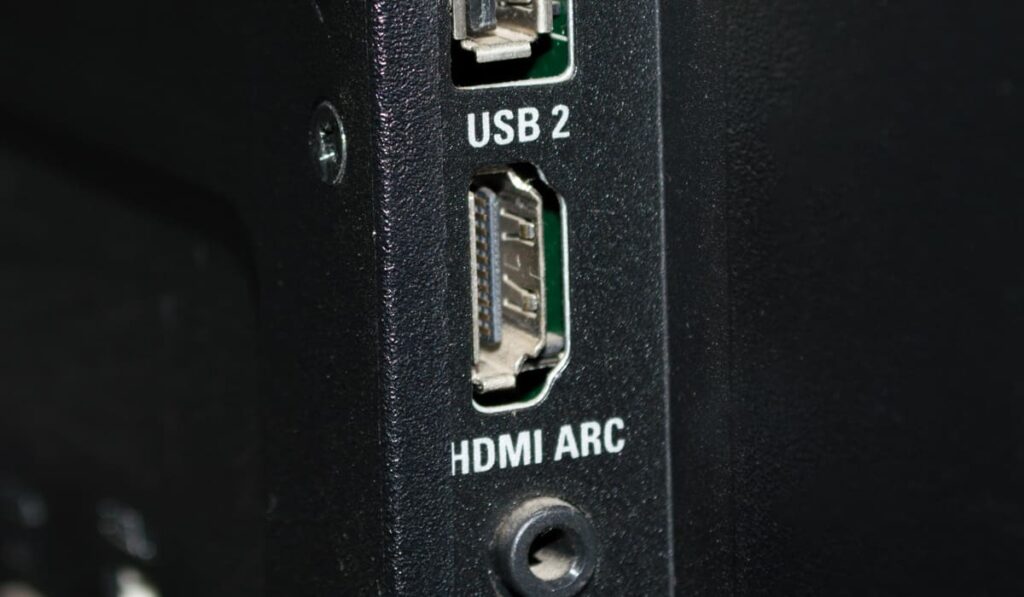With the growing demand for a better sound experience, almost every device supports Dolby Atmos audio these days. This being the case, it would be disappointing if you couldn't enjoy the latest surround sound technology in your home. So which connections are necessary for Dolby Atmos Audio? Can you stream Atmos sound without HDMI eARC?
You can stream Dolby Atmos audio using HDMI ARC instead of eARC. HDMI ARC transmits Atmos audio via the Dolby Digital Plus sound format. Just make sure that the TV and soundbar both support ARC signals. In addition, the TV must support Dolby Digital Plus sound codec.
Considering that most popular streaming channels compress audio and video files to a huge extent, you might not notice much difference when using HDMI ARC compared to eARC. You won't be able to get the whole Dolby Atmos TrueHD experience with only an ARC connection. Read on for more on the differences between the two ways to get Atmos sound.
What is Dolby Atmos?

Atmos is a type of surround sound audio technology that offers an enveloping experience to its users. Dolby Atmos creates an immersive effect by covering the entire room from different angles.
However, this technology is very different from conventional channel-based audio systems. Rather than using different levels to send audio across its speakers, this technology reproduces 118 simultaneous sound objects.
Cinemas install many speakers to offer that kind of diverse sound, recreating the original audio effect using Dolby Atmos format.
That kind of setup is most likely impossible in your home. Luckily, you can still configure Atmos by adding extra speakers to your ceiling.
With the proper arrangement of speakers and the Dolby Atmos technology, one can hear sound from exact points referenced within the sound field.
The object-based sound effects also quickly move around the allocated space to offer 3D audio quality.
What is HDMI eARC?

Enhanced Audio Return Channel (eARC) is an enhanced version of the typical ARC (Audio Return Channel).
The role of the ARC is to transmit digital audio files using HDMI cables. However, with the development of object-oriented audio codecs, carrying bigger data files among home theater devices became necessary. That's when eARC surfaced.
eARC is much stronger in terms of bandwidth and speed when compared to its predecessor. With the higher bandwidth, eARC can transfer more information within a given time frame.
Higher bandwidth also means no need to compress audio files. This enables eARC to provide cinematic surround sound quality via Dolby Atmos or DTS:X without losing even the slightest amount of data from the original file.
Note: Your TV and soundbar must support HDMI-eARC in order to enjoy Digital Atmos sound via the superior Digital Dolby TrueHD technology.
Is eARC Required for Dolby Atmos?
No, eARC is not required for Dolby Atmos to work. Dolby Atmos can work with regular HDMI ARC through the Dolby Digital Plus audio codec. However, those wanting Dolby Atmos TrueHD must use eARC.
You can also bypass ARC entirely by connecting the media device directly to the soundbar or AV receiver, just like you would connect a PS5 to a soundbar. With this type of setup, it doesn't matter what the TV supports. Only the media device and audio device need to support Dolby Atmos.
What Is the Difference Between Dolby Digital Plus and Dolby TrueHD?
Both of these audio codecs create Dolby Atmos surround sound effects. However, the major difference between TrueHD and Digital Plus lies in how they transfer audio data between devices.
Compressed Data Transfer
Digital Dolby Plus compresses original data files to send audio and video information over limited bandwidth. This is the technique chosen by most video streaming sites such as Amazon Prime, Netflix, and more.
Therefore, you won’t require an eARC connection for watching videos on those sites or similar ones. Rather, the basic ARC port will suffice for the job.
Full Surround Sound Transfer (Without Compression)
Basically, Dolby TrueHD provides a much more enveloping Dolby Atmos experience than the Digital Plus codec. This is because the technology works with uncompressed data files.
In other words, using Dolby TrueHD, the devices transmit data in their original form. This, in turn, results in more immersive sound effects. However, it utilizes much more data than its counterpart.
To achieve full Dolby Atmos, you must also have an eARC-compatible output device. You can transfer uncompressed audio to your sound system via eARC.
Just remember, eARC ports are backward compatible. If your TV is incompatible with eARC signals, it will get back to the usual ARC.
How to Use HDMI ARC to Get Dolby Atmos Sound

Now that you know it is possible to get Dolby Atmos audio without an eARC port, you're probably wondering how to do it.
The HDMI ARC creates Dolby Atmos sound using Dolby Digital Plus audio format. This particular codec sends compressed data from the TV to the soundbar, which, when decompressed at the destination, provides surround sound effects.
There are two different decompression techniques used for this audio codec: Lossy and Lossless. While both these compression techniques result in data loss, the latter retains the most information from the original file.
If you are setting up a home theater to access Atmos sound using HDMI ARC, you must ensure the following:
- Both devices connected to the HDMI cable must support ARC signals. If you are configuring your soundbar with a TV, look for an HDMI ARC port on both devices.
- Your TV must be capable of transferring Dolby Digital Plus signals. If it only supports Dolby digital or any codec prior to that, you won’t be able to achieve Atmos sound. To check this detail, you can refer to the TV’s manual or contact its manufacturer.
Once you've verified all this information, you can connect the TV and the soundbar to access Atmos sound via HDMI ARC.
Is There a Difference in Sound Quality Between HDMI ARC and eARC?
Many individuals worry about sound quality when using HDMI ARC instead of eARC. In some cases, it might help to use eARC over ARC signals for Dolby Atmos. As long as your TV and soundbar support the eARC port, you may notice a significant difference in the sound quality.
eARC can considerably reduce lagging and delays. Plus, it can help stream compressed and uncompressed data streams at a remarkable speed and with superb accuracy.
However, most streaming applications still use compressed audio formats at the moment. Therefore, it's unlikely that you would notice a difference in the sound quality when streaming movies with either of the options.
How Do I Know if My TV Has HDMI eARC?
Finding out this information is a piece of cake. All you need to do is check the labeling of your HDMI ports. The one with eARC support will mention its name.
You are good to go if you find eARC written on your HDMI port. These ports are backward compatible. Hence, most TV often marks these ports as ‘ARC/eARC’. So don't be confused if you see both.
Also, remember that some TVs might not mark their ports with the eARC label even if they support it. So before coming to any conclusions, always check the TV’s manual to confirm, especially if your TV is a recent release.





